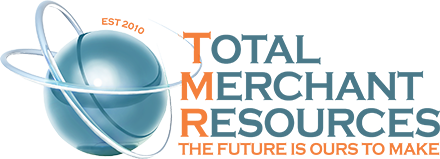
Leasing equipment can be a smart move for many businesses. Instead of spending a large amount of money upfront to buy equipment, leasing allows you to pay for the use of the equipment over time. This can help you maintain cash flow and budget more effectively. Whether you run a small startup or a growing enterprise, leasing can offer flexibility and keep your business operations running smoothly.
Choosing to lease equipment also means you can access the latest technology without the hefty price tag. This is particularly beneficial in industries where technology changes rapidly. Leasing gives you the option to upgrade to newer equipment at the end of your lease term, ensuring you always have the best tools for the job.
In this easy guide, we’ll dive into the benefits of leasing equipment and provide practical steps for how to start the leasing process. We’ll also offer tips for selecting the right equipment to lease and managing it efficiently to get the most value for your investment. Whether you’re new to leasing or looking to improve your current practices, this guide will help you make informed decisions that benefit your business.
Why Leasing Equipment Can Benefit Your Business
Leasing equipment offers several advantages that can help your business grow without straining your budget. One of the main benefits is conserving capital. Instead of spending a large amount of money upfront to buy equipment, leasing allows you to spread out the cost over time. This can free up cash for other important expenses like salaries, marketing, or inventory.
Another benefit is flexibility. Leasing contracts often include options to upgrade your equipment as newer models become available. This means you can stay on the cutting edge of technology without the hassle and expense of selling outdated equipment. In industries where technology changes rapidly, this can be a major advantage.
Leasing also provides tax benefits. Lease payments may be deductible as a business expense, which can reduce your taxable income. This can result in significant savings over time. Additionally, maintenance and repair services are often included in leasing agreements, which can save you both time and money.
Lastly, leasing can improve your business credit. Regular lease payments can boost your credit score, making it easier to secure additional financing in the future. Overall, leasing offers a combination of financial, operational, and strategic benefits that can help your business thrive.
How to Choose the Right Equipment to Lease
Choosing the right equipment to lease is crucial for getting the most value out of your investment. Start by assessing your business needs. Determine what type of equipment is essential for your operations and how it will be used. Make a list of features that are important, such as durability, ease of use, and compatibility with existing systems.
Next, research available options. Look at various brands and models to find equipment that meets your criteria. Pay attention to reviews and ratings to gauge reliability and performance. Talking to other business owners in your industry can also provide valuable insights.
Consider the total cost of leasing, not just the monthly payments. Factor in any additional fees, such as setup, maintenance, and termination charges. Compare these costs with the benefits of leasing, such as tax deductions and included services, to determine if leasing is the best financial choice for your business.
Also, think about the lease terms. Some leases offer more flexibility than others. Look for options that allow you to upgrade equipment at the end of the lease term or even purchase the equipment if it suits your long-term needs. Make sure the lease terms align with your business goals and operational needs.
Finally, consult with a leasing expert if you’re unsure about any aspect of the leasing process. They can help you navigate the terms and conditions, ensuring you make an informed decision. Choosing the right equipment to lease involves careful planning and research, but it can lead to significant benefits for your business.
Steps to Start Leasing Equipment
Starting your equipment leasing process can be simple if you follow a few key steps. First, determine what equipment you need. Make a list of the items essential for your business operations, and identify their specifications. Knowing exactly what you need will streamline the next steps.
Next, research different leasing companies. Look for companies with good reputations and strong reviews from other business owners. Compare their lease terms, interest rates, and the services they offer. Once you find a few potential options, contact them to get detailed quotes.
Prepare your financial documents before applying. Most leasing companies will want to see your business’s financial health. Gather income statements, balance sheets, and cash flow statements. Having these documents ready can speed up the approval process.
Submit your application and wait for approval. Once approved, carefully review the lease agreement. Make sure you understand all the terms, including monthly payments, lease duration, and any potential fees. Ask questions if anything is unclear before you sign.
Lastly, arrange for the delivery and setup of your leased equipment. Ensure it’s installed correctly and that your team knows how to use it. Following these steps will help you lease the equipment your business needs without unnecessary delays or complications.
Tips for Managing Your Leased Equipment
Managing leased equipment effectively is important to maximize its value and ensure it supports your business operations. Start by keeping detailed records. Maintain an inventory of all leased items, including their lease terms, serial numbers, and maintenance schedules. This will help you stay organized and avoid any misunderstandings with the leasing company.
Regular maintenance is crucial. Follow the manufacturer’s recommendations for servicing the equipment. Routine checks and timely repairs can prevent breakdowns and extend the life of the equipment. Sometimes, leasing agreements include maintenance services, so take advantage of them.
Train your staff to use the equipment properly. Provide detailed instructions and training sessions to ensure everyone knows how to operate the equipment safely and efficiently. Proper usage reduces wear and tear, lowering the risk of damage.
Stay in touch with your leasing company. If any issues arise, communicate with them promptly. Whether it’s a need for repairs or a question about the lease terms, maintaining open communication can prevent small problems from becoming big headaches.
Finally, plan for the end of the lease. Decide whether you will return the equipment, renew the lease, or purchase the equipment. Knowing your options in advance will help you make the best decision for your business.
Conclusion
Leasing equipment can provide your business with many benefits, such as conserving capital, gaining flexibility, and accessing the latest technology. By carefully choosing the right equipment and following a structured leasing process, you can meet your business needs without large upfront costs. Managing your leased equipment effectively ensures that it continues to serve your business well and avoids unnecessary complications.
At Total Merchant Resources, we offer tailored solutions for business loans, equipment leasing, and more. If you’re ready to take the next step and explore how leasing can benefit your business, contact Total Merchant Resources today to learn more about our merchant loan servicesand options.



